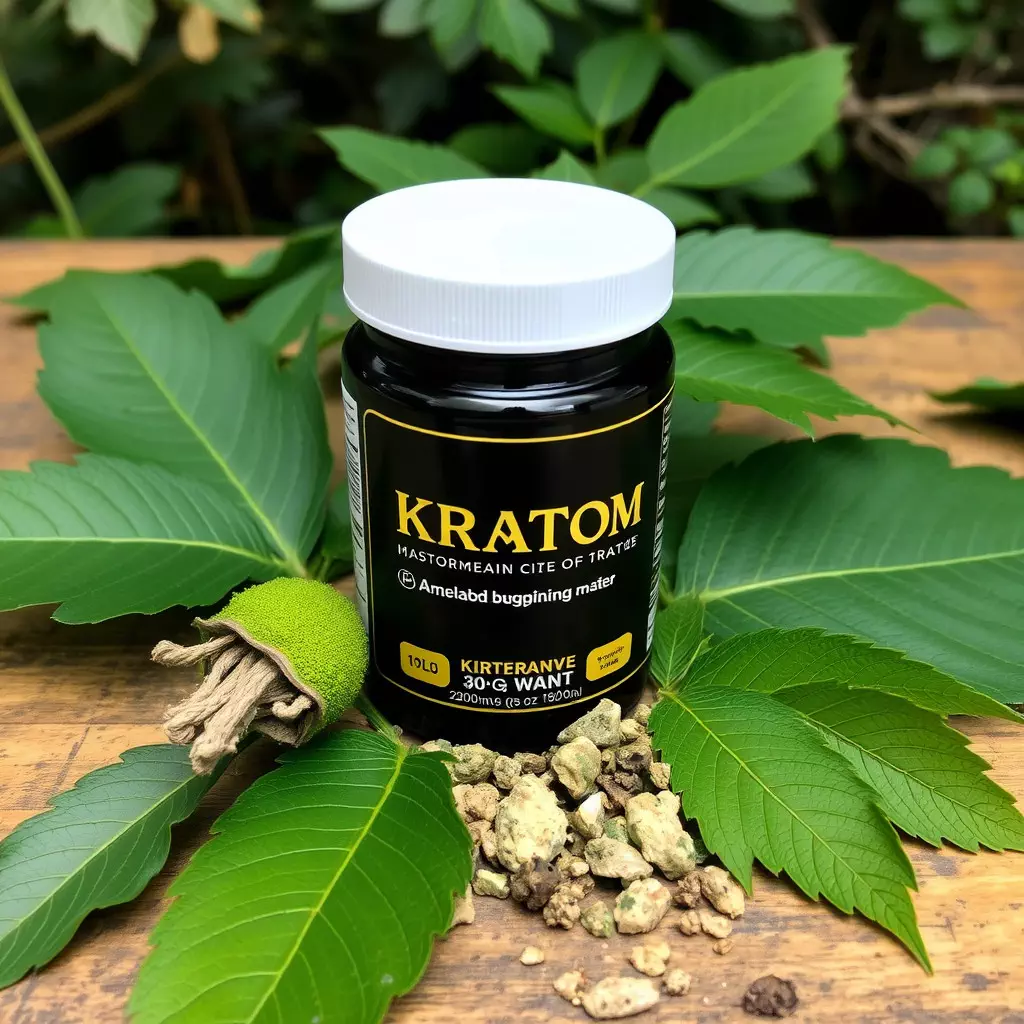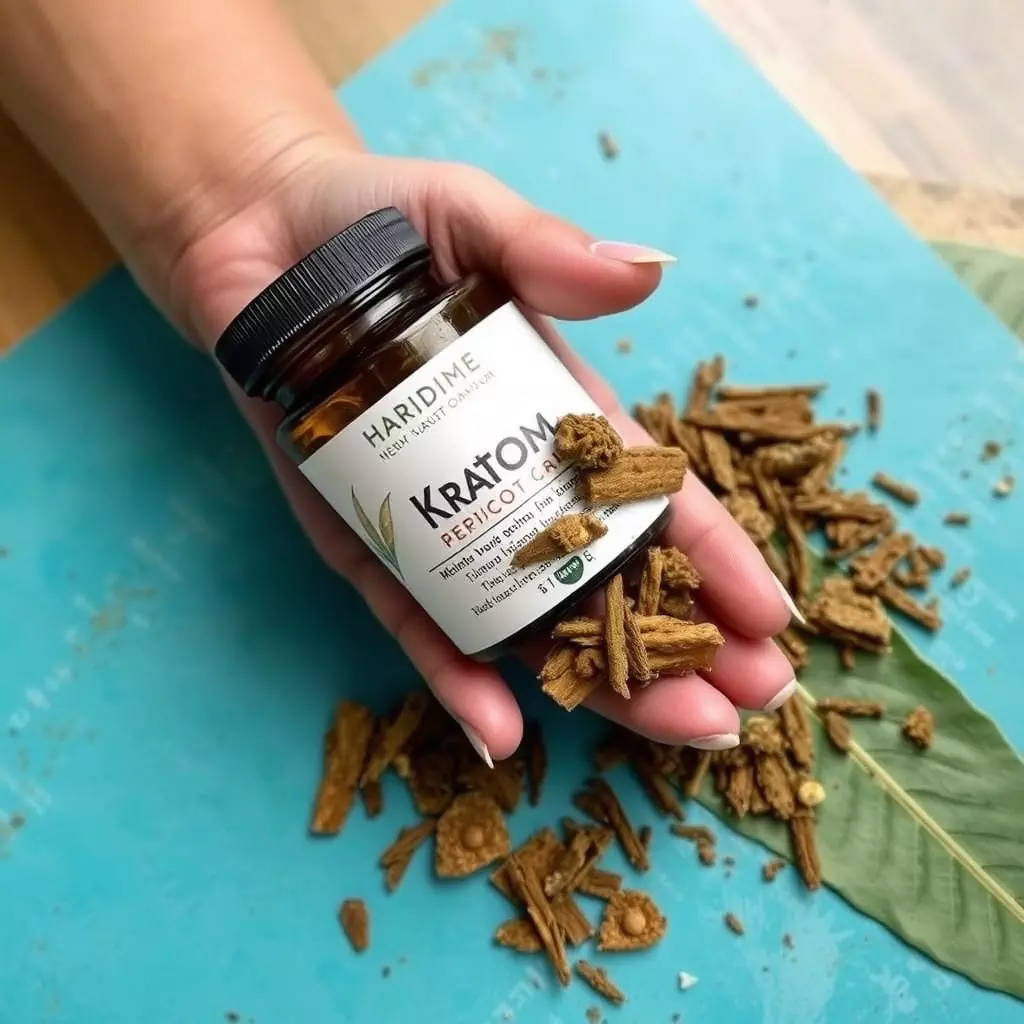Kratom, from Southeast Asia, has been recognized for its potential to provide joint pain relief, primarily due to its active compounds mitragynine and 7-hydroxymitragynine. These alkaloids interact with opioid receptors in the body to potentially manage chronic joint pain conditions like arthritis. Users often favor specific strains such as Maeng Da or Bali for their analgesic properties, which may influence pain perception in the brain and spinal cord, helping to reduce discomfort. However, it's essential to approach kratom with caution, considering individual differences in response and the lack of definitive scientific evidence on its efficacy and long-term effects. A comprehensive joint pain management strategy should be discussed with healthcare professionals, who can offer guidance on an integrated treatment plan including lifestyle modifications, physical therapy, and appropriate medications. Ongoing research into kratom's anti-inflammatory properties suggests it could complement analgesic effects for conditions like osteoarthritis and rheumatoid arthritis by reducing inflammation. However, individuals should consult with healthcare providers regarding the use of kratom to ensure safe usage and to avoid potential drug interactions. For those interested in exploring kratom for joint pain relief, a regimen that includes natural anti-inflammatory agents like turmeric and ginger, along with regular exercise, proper nutrition, and adequate sleep, may enhance its benefits while minimizing risks.
explored in this article, kratom has emerged as a potential natural ally for those seeking joint pain relief. Its active compounds, mitragynine and 7-hydroxymitragynine, are the focus of scientific investigation into their effects on joint health, offering insights into the plant’s healing properties. As we delve into the safe and responsible use of kratom for enhanced joint pain relief, readers will gain a comprehensive understanding of how this botanical substance can be integrated into a wellness regimen.
- Understanding Kratom's Role in Joint Pain Relief
- The Science Behind Kratom and Its Impact on Joint Health
- Safe Practices for Using Kratom to Enhance Joint Pain Relief
Understanding Kratom's Role in Joint Pain Relief

Kratom, a tropical evergreen tree native to Southeast Asia, has garnered attention in natural health circles for its potential role in joint pain relief. The active compounds found in kratom leaves, primarily mitragynine and 7-hydroxymitragynine, are thought to interact with the body’s opioid receptors, which may help alleviate chronic pain. Users reporting joint pain relief with kratom often cite specific strains such as Maeng Da or Bali, noting their analgesic properties. It is believed that these compounds can modulate pain signals in the brain and spinal cord, offering a decrease in discomfort associated with arthritis or other joint conditions.
When considering joint pain relief with kratom, it’s important to approach its use with caution due to the complexity of joint issues and individual differences in how the body processes kratom. While anecdotal evidence suggests positive outcomes for some individuals, scientific research is still emerging, and long-term effects are not yet fully understood. Those seeking joint pain relief through kratom should consult healthcare professionals, particularly given the potential for interactions with other medications and the need for a comprehensive approach to managing joint pain that includes lifestyle adjustments, physical therapy, and possibly prescription medications under medical supervision.
The Science Behind Kratom and Its Impact on Joint Health

MIT-contained compounds found in kratom, known as alkaloids, particularly mitragynine and 7-hydroxymitragynine, have been studied for their potential to influence joint health. These alkaloids interact with the body’s opioid receptors, which may help in managing pain associated with joint conditions. The analgesic properties of kratom are believed to be a key factor in its use for joint pain relief. Scientific research suggests that these alkaloids can modulate the brain’s perception of pain, offering a natural approach to pain management without the side effects commonly associated with prescription painkillers.
Furthermore, kratom’s potential impact on inflammation is an area of interest in the context of joint health. Some studies indicate that certain alkaloids may exert anti-inflammatory effects, which could be beneficial for individuals suffering from conditions like osteoarthritis or rheumatoid arthritis. The anti-inflammatory action might work synergistically with the pain-relieving properties to provide a more holistic approach to joint pain relief. However, it is crucial for individuals considering kratom as an option for joint health to consult healthcare professionals due to the complex nature of joint conditions and the potential for interactions with other medications. The scientific community continues to investigate the efficacy and safety of kratom in this realm, emphasizing the importance of a balanced approach to understanding its role in joint pain relief.
Safe Practices for Using Kratom to Enhance Joint Pain Relief

When exploring the potential of kratom for joint pain relief, it’s crucial to approach its use with caution and informed guidance. Kratom, derived from the leaves of Mitragyna speciosa, contains alkaloids that may offer analgesic effects which can be beneficial for those experiencing joint discomfort. To safely harness these benefits, it’s imperative to start with a low dose to gauge individual sensitivity and gradually increase as needed while monitoring one’s response. Users should be aware of the strains available; certain strains like Maeng Da are known for their painkilling properties. It’s also vital to maintain a consistent dosing schedule, as recommended by healthcare professionals or product labeling, to ensure a steady level of relief without overconsumption.
In addition to careful dosing, combining kratom with other natural remedies such as turmeric and ginger, which also possess anti-inflammatory properties, may enhance joint pain relief. Regular exercise, proper nutrition, and adequate sleep are complementary practices that should be integrated into one’s routine for optimal joint health alongside the use of kratom. Moreover, individuals with pre-existing health conditions or those on medication should consult with a healthcare provider before incorporating kratom into their regimen to avoid potential interactions. Adhering to these safe practices can help users achieve joint pain relief while minimizing risks associated with kratom usage.
In conclusion, kratom’s role in joint pain relief has been a subject of considerable interest and research. The scientific community has uncovered how this natural substance can potentially offer significant relief for those suffering from joint discomfort. By adhering to safe practices when using kratom, individuals can harness its beneficial properties without compromising their well-being. It’s clear that further investigation into the efficacy and optimal dosing of kratom for joint pain relief is warranted, promising a hopeful outlook for those in pursuit of natural alternatives to manage their discomfort effectively.






